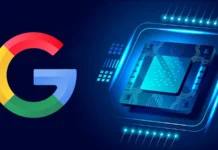5G Technology: Revolutionizing Connectivity and Its Potential Implications
Introduction
In today’s digital age, connectivity plays a crucial role in our lives. With the advent of 5G technology, we are witnessing a significant revolution in the way we connect to the world around us. 5G, the fifth generation of wireless technology, promises to deliver faster speeds, lower latency, and enhanced capacity, paving the way for a wide range of applications that were previously unimaginable. In this article, we will explore the potential implications of 5G technology and how it is revolutionizing connectivity.
The Rise of 5G Technology
What is 5G Technology?
5G technology refers to the fifth generation of wireless technology, which succeeds the fourth generation (4G) network. It is designed to provide faster and more reliable connectivity compared to its predecessors. With 5G, users can experience incredibly high data transfer speeds, minimal latency, and improved network capacity.
How Does 5G Technology Work?
Unlike previous generations of wireless technology, 5G operates on a higher frequency band, including millimeter waves. These higher frequencies enable faster data transmission rates, allowing for more devices to connect simultaneously without compromising the network’s performance. Additionally, 5G utilizes advanced beamforming techniques, which direct signals more precisely, ensuring optimal connectivity and reducing interference.
5G Technology: Revolutionizing Connectivity
Enhanced Mobile Broadband (eMBB)
One of the key aspects of 5G technology is its ability to provide enhanced mobile broadband services. With 5G, users can enjoy lightning-fast download and upload speeds, enabling seamless streaming of high-definition videos, online gaming, and real-time video conferencing. The increased bandwidth offered by 5G opens up new possibilities for content consumption and delivery.
Internet of Things (IoT) Connectivity
The Internet of Things (IoT) has gained significant traction in recent years, and 5G is set to further accelerate its growth. 5G networks can support a massive number of IoT devices, enabling seamless connectivity and communication between them. This has implications across various industries, from smart homes and cities to healthcare and transportation, where interconnected devices can streamline operations and improve efficiency.
Industry Automation and Autonomous Systems
5G technology has the potential to revolutionize industries by enabling advanced automation and autonomous systems. With its low latency and high reliability, 5G can support critical applications such as remote surgery, autonomous vehicles, and industrial automation. This opens up new possibilities for efficiency, productivity, and safety across a wide range of sectors.
Immersive Technologies
Virtual reality (VR), augmented reality (AR), and mixed reality (MR) are immersive technologies that rely on fast and reliable connectivity. 5G’s high speeds and low latency are crucial for delivering seamless and immersive experiences in these domains. From immersive gaming to virtual tourism and remote training, 5G unlocks new possibilities for immersive technologies to flourish.
Smart Cities and Infrastructure
5G technology holds immense potential for the development of smart cities and infrastructure. With its ability to handle massive amounts of data and support a vast number of connected devices, 5G can power intelligent transportation systems, efficient energy management, and real-time monitoring of critical infrastructure. This can lead to improved sustainability, resource management, and overall quality of life in urban areas.
Potential Implications of 5G Technology
Enhanced Connectivity for Rural Areas
One of the significant implications of 5G technology is the potential to bridge the digital divide between urban and rural areas. By providing high-speed internet connectivity to remote regions, 5G can empower individuals and communities with access to educational resources, healthcare services, and economic opportunities that were previously limited.
Data Privacy and Security Concerns
With the proliferation of connected devices and the exponential growth of data transmission, data privacy and security become critical concerns. As 5G networks connect a vast number of devices and systems, ensuring the confidentiality, integrity, and availability of data becomes paramount. Stakeholders need to address these concerns proactively to build trust and maintain a secure ecosystem.
Spectrum Allocation and Infrastructure Deployment
The successful rollout of 5G technology requires adequate spectrum allocation and infrastructure deployment. Governments and regulatory bodies play a crucial role in allocating and managing spectrum resources, ensuring fair competition and optimizing network performance. Moreover, the deployment of infrastructure, such as small cell towers and fiber-optic networks, needs careful planning and coordination.
Environmental Impact
As technology advances, considering its environmental impact becomes essential. The widespread adoption of 5G technology entails the deployment of additional infrastructure, which can have implications for energy consumption and environmental sustainability. It is crucial to adopt eco-friendly practices and technologies to mitigate the environmental footprint of 5G networks.
Health and Safety Concerns
With the increased prevalence of wireless technology, concerns regarding the potential health effects of electromagnetic radiation have emerged. While scientific research indicates that 5G is safe, ongoing monitoring and adherence to safety standards are necessary to ensure the well-being of individuals and communities.
Economic and Societal Transformation
The widespread implementation of 5G technology can lead to significant economic and societal transformations. It can fuel innovation, create new business models, and generate employment opportunities across various sectors. Additionally, it can empower individuals, improve public services, and foster digital inclusion, contributing to overall social progress.
Frequently Asked Questions (FAQs)
Q: What makes 5G technology different from previous generations?
A: Unlike previous generations, 5G technology offers faster speeds, lower latency, and higher capacity, enabling a wide range of applications such as IoT, automation, and immersive technologies.
Q: How will 5G technology impact the healthcare sector?
A: 5G can revolutionize healthcare by enabling remote patient monitoring, telemedicine, and faster access to medical records, improving the quality and accessibility of healthcare services.
Q: Are there any risks associated with 5G technology?
A: While 5G technology offers numerous benefits, concerns regarding data privacy, security, and potential health effects of electromagnetic radiation need to be addressed proactively.
Q: Will 5G technology replace Wi-Fi?
A: 5G technology is not intended to replace Wi-Fi but rather complement it. While 5G provides cellular connectivity, Wi-Fi remains crucial for localized wireless network access.
Q: How long will it take for 5G technology to be widely available?
A: The rollout of 5G technology varies by region and depends on factors such as infrastructure deployment, spectrum availability, and regulatory frameworks. It is expected to be widely available in the coming years.
Q: Can 5G technology support autonomous vehicles?
A: Yes, 5G’s low latency and high reliability make it suitable for supporting autonomous vehicles, enabling real-time communication and enhancing road safety.
Conclusion
The advent of 5G technology is poised to revolutionize connectivity and unleash a wave of innovation across various industries. With its promise of faster speeds, lower latency, and enhanced capacity, 5G opens up a world of possibilities, from enhanced mobile broadband and IoT connectivity to industry automation and immersive technologies. However, addressing concerns related to privacy, security, infrastructure, and environmental impact is crucial for a successful and sustainable 5G ecosystem. As we embrace this technological revolution, it is essential to leverage the potential of 5G to create asustainable and inclusive future for all.











